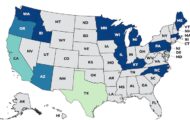A study published in the March edition of the CDC’s Emerging Infectious Diseases reveals that more Americans are being sickened by imported food. The study’s authors state that “a small but increasing number of foodborne disease outbreaks [are] associated with imported foods, most commonly fish and produce. New outbreak investigation tools and federal regulatory authority are key to maintaining food safety.”

About 19% of the food we eat in this country is imported. About 97% of the fish and shellfish we consume, 50% of fresh fruits, and 20% of fresh vegetables come from other countries. This proportion has steadily increased over the past 20 years because consumers want to eat produce out of season and want a wider selection of products.
A food poisoning outbreak is two or more unrelated people with a similar illness from eating a common food. The study’s authors reviewed reports to identify outbreaks associated with imported foods from 1973 to 2014. Up until 1997, this information was reported anecdotally.
During 1996 – 2014, 195 outbreak investigations implicated an imported food. These outbreaks caused 10,685 illnesses, 1017 hospitalizations, and 19 deaths. The number of outbreaks associated with an imported food increased from an average of 3 per year during 1996 – 2000 to an average of 18 per year during 2009 – 2014.
The most common agents in these outbreaks were Salmonella and scombroid toxin (a compound produced by degrading fish such as tuna, mackerel, mahi-mahi, and bluefish). Most illnesses were associated with Salmonella and Cyclospora.
Fish and shellfish caused 55% of outbreaks, and 11% of outbreak-associated illnesses. Produce caused 33% of outbreaks and 84% of outbreak-associated illnesses. Outbreaks attributed to produce had a median of 40 illnesses, compared with a median of 3 illnesses in outbreaks associated with fish.
These foods were imported from Latin America and the Caribbean in most of the outbreaks. Mexico was most frequently implicated, along with Indonesia and Canada. One quarter of the outbreaks were multistate, which reflects the wide distribution of imported foods. The researchers stated, ” Mexico is the source of about one quarter of the total value of fruit and nut imports and 45%–50% of vegetable imports, followed by Chile and Costa Rica. Similarly, our finding that many outbreaks were associated with fish from Asia is consistent with data on the sources of fish imports.”
Almost all of these foods linked to or associated with outbreaks are under FDA jurisdiction, but only a tiny percentage of these foods are actually inspected by government officials when they enter the U.S. The researchers state that “new rules under the Food Safety Modernization Act of 2011, including the Preventive Controls Rule for Human Food, Produce Safety Rule, Foreign Supplier Verification Program, and Accreditation of Third Party Auditors, will help to strengthen the safety of imported foods by granting FDA enhanced authorities to require that imported foods meet the same safety standards as foods produced domestically.”
The researchers end by stating the prevention, focusing on the imported foods that cause the most outbreaks, produce and seafood, could help prevent future outbreaks. Strengthening reporting by gathering better data on the original of implicated food items could also help.
Resource: Gould L, Kline J, Monahan C, Vierk K. Outbreaks of Disease Associated with Food Imported into the United States, 1996–2014. Emerg Infect Dis. 2017;23(3):525-528.




